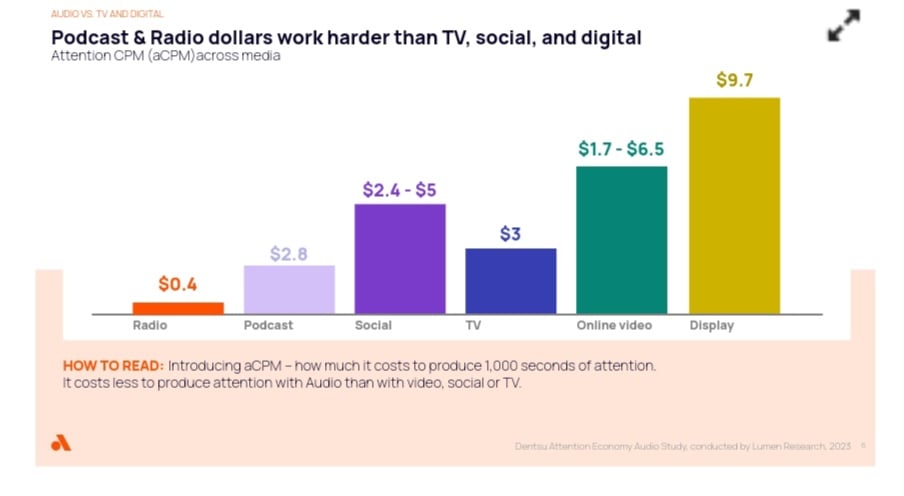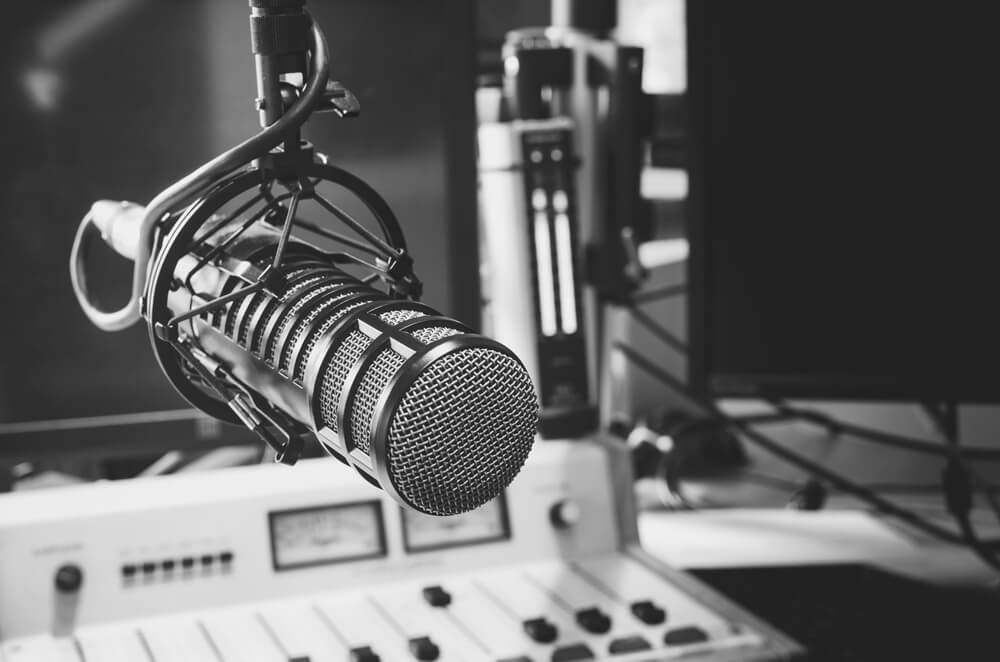Study Shows Audio Advertisements Triumph Over Video in Garnering Attention and Enhancing Brand Recall
Advertising attentiveness refers to the degree to which persons exposed to media advertising are focused on it. The first-ever study of media attentiveness comparing AM/FM radio ads and podcasts to visual ads was recently conducted by one of the world's largest media agencies, Dentsu.
Let's look at that study and examine the results to learn what it all means for audio vs. visual ads going forward:
The Study: Lumen AM/FM Radio and Podcast Attention Study from Dentsu
Dentsu worked with research partner Lumen to measure attention in audio and video media destinations. Using research conducted by the Interactive Advertising Bureau (IAB), Cumulus Media, Signal Hill out of Canada, and advertising creative testing firm ABX, measurement tactics were developed that passively collected audio listening data and survey results.
Audio Testing Formats
An AM/FM radio station player was created for mobile and desktop where respondents could listen to an AM/FM radio station format of their choice among seven different options. During each hour-long sample, there were three ad breaks shared among five advertisers.
Likewise, Lumen created a podcast player for mobile and desktop for the podcast study. Participants could listen to a podcast of their choice from a library of 20 representing a range of genres. Each podcast featured three ad breaks comprised of three to four advertisers. Ad breaks were served as pre-roll, mid-roll, and post-roll.
1,700 respondents were exposed to listening environments similar to their native audio experiences whether that was selecting a podcast, AM/FM radio station, or a genre of music on a streaming service. Dentsu's Attention Economy Survey was administered post-listening to gauge ad recall and brand choice uplift compared to a similarly recruited control group.
Video Testing Format
To test visual media attentiveness, Lumen used eye-tracking technology to measure the portion of visual ads seen. Reporting an attention cost per thousand based on the impressions that are viewed, Lumen then measured which ads were remembered as well as the degree to which the advertised brand could be considered a good choice.
During the study, participants could increase or decrease the volume until muted. The podcast had controls to fast-forward the audio 15 seconds.
The Results
According to the results of the study, broadcast radio and podcast marketing lead in attentiveness with higher indications of getting noticed, holding attention, and being skipped the least. Key findings revealed that:
- The attentiveness scores for audio are much stronger than TV.
- Audio generates higher brand recall than online video and display.
- Production and distribution of AM/FM radio and podcast ads is more cost-effective than TV marketing.
The surprising strength of audio indicates that AM/FM radio and podcast listeners are learning, getting information, and feeling connected. This is paramount to brand building.

What Does This Mean?
The Dentsu/Lumen study erased the myth that video ads are somehow superior to audio ads. Of the top three implications:
- Audio creates memories, improves brand recall, and increases brand choice.
- Audio is remarkably cost-effective.
- Audio advertising should be in every media plan.
Businesses that use audio versus video advertising enjoy cost efficiency and greater brand equity.

The Attention Pathway
AM/FM radio and podcast ads have the highest attentiveness of all media pathways. The three stages to what the Association of National Advertisers defines as the pathway to attention include:
- Get Noticed. Because advertising requires an environment that fosters attention, quality media placement is crucial. The best quality placements create the greatest potential for attracting attention.
- Hold Attention. It is vital to keep the viewer focused on the ad. This can be measured using duration.
- Impact Memory. The creative must deliver a brand message that affects the short- and long-term memory of the person paying attention to the ad.
This attention pathway is more pronounced on AM/FM radio and podcasts because listeners are more likely to hear the ads without the influence of background music and sound effects.

Mid-West Family Can Fulfill Your Audio Needs Through Broadcast Radio Marketing
The industry's first attention-focused study defined the true value of attention across channels, platforms, and formats to revolutionize the way the advertising industry plans, measures, and buys media. To stay ahead of the curve, you can depend on Mid-West Family Eau Claire to fulfill your audio needs through broadcast radio marketing.
Through our broadcasting expertise, we offer a tailored approach to frequency, scheduling, and programming to get the most out of your audio ads. Our close relationships with our markets and well-defined demographic groups allow us to make the most of your marketing dollars.
Contact us today to let our experts help you create a branding and messaging strategy that will connect ideal customers to your brand. As the standard in broadcast radio for decades, we can help you turn up your brand.



